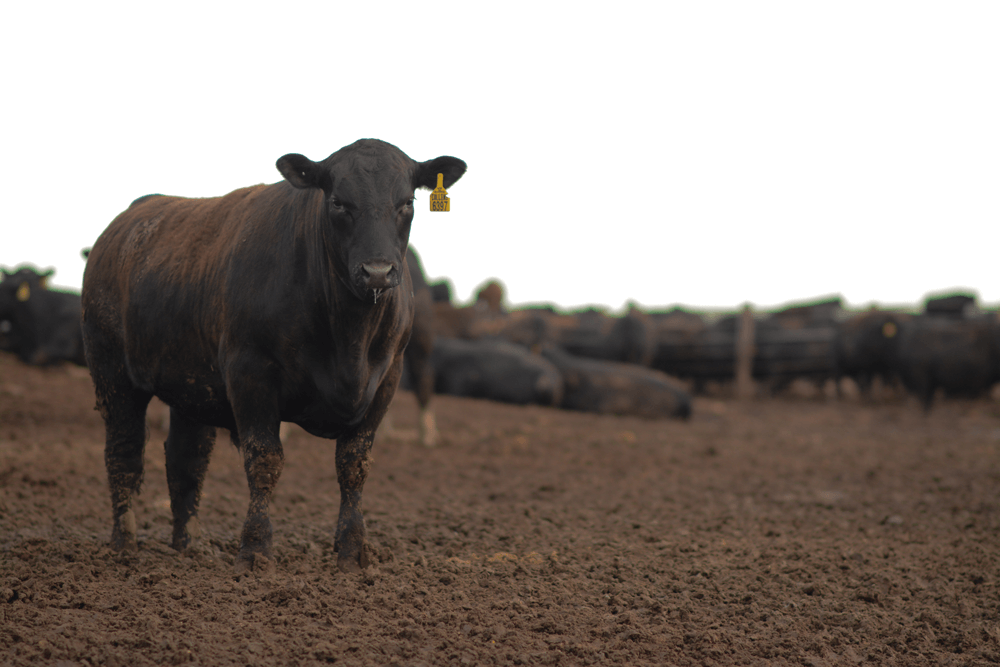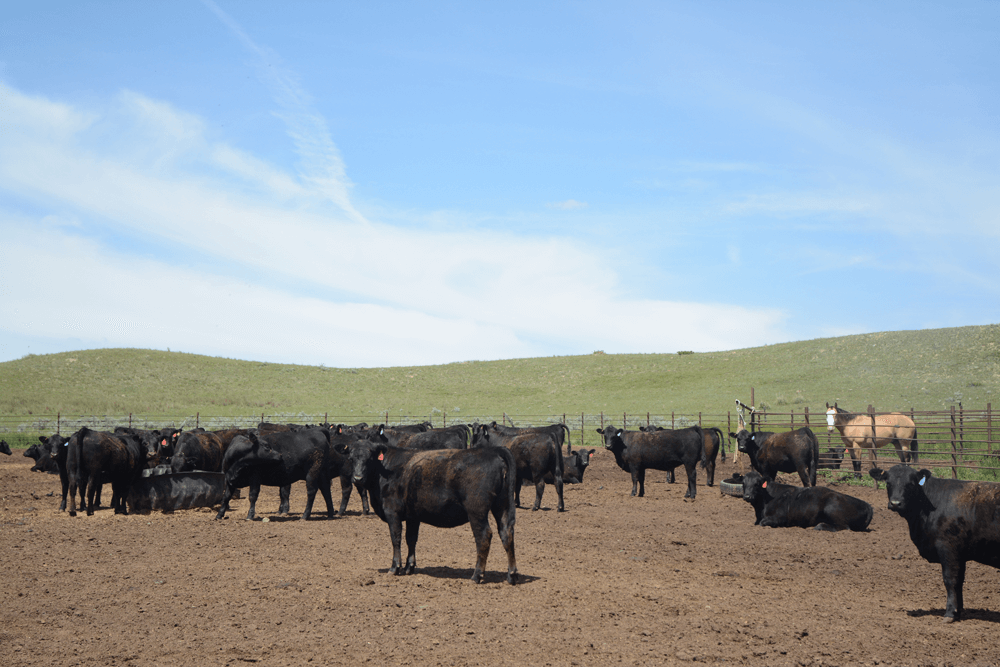
Commercial Feeder Calf Marketing
Reputation feeder cattle are no accident. Information adds value. Today, buyers have access to more Angus cattle and generic “black” calves than any other type. Amid the marketing claims and hype, buyers are most likely to focus on cattle that add value to the best known Angus genetics.
Ownership transfers vary from traditional auction markets to direct sales to cattle feeders or feedlots. With several outlets for marketing your calf crop, documentation of the value you’ve added is key. Regardless of how and when you intend to sell, tools and strategies for capturing a higher price are available below.
Breakeven Calculators
Make informed decisions by using our unique, interactive breakeven calculators to discover fair market value for your calves or feeder cattle.
Calf Price Breakeven Calculator
Information adds value. Cattlemen who raise Angus-type calves with detailed records that document no implants, antibiotics or animal-derived feeds used in production and still meet all brand specifications can qualify for Certified Angus Beef ® (CAB®) brand Natural. Currently Tyson, National Beef and Niman Ranch produce the more than 6 million pounds of CAB brand Natural sold each year.
A unique tool to:
- Discover fair market value for your calves or feeder cattle.
- Decide if cattle should be sold or if retained ownership offers more profit potential based on market conditions, cattle genetics and management background.
- Calculate backward from a projected fed-cattle price while including normal or expected feedlot costs to arrive at the value of the cattle upon entering the feedlot.
- Assist buyer and seller in establishing a breakeven price at the time the calves or feeders are being sold or entered into joint ownership.
- Project potential carcass quality of the cattle and also adjust the values that are being paid for quality grade, yield grade and weight.
- Use for Informed Results through increased research and understanding of fed cattle and carcass marketing.
The model assumes cattle will go directly to a feedlot and will not be backgrounded further.
Only the blue-colored cells in this calculator are used to change the assumptions about markets, prices and cattle performance. The white cells will adjust based on the numbers placed in the blue cells. It is important that all of the blue cells are accurate in order to get an accurate final outcome.
In the spreadsheet, you can click on the red triangle in the corner for an explanation of what data to enter into a specific cell. The following pages provide a complete line-by-line explanation of all data needed.
Download the Calf Price Breakeven Calculator
This calculator does not guarantee market behavior, cattle performance, feed costs or any other factor affecting profit or loss involved in feeding, buying or selling cattle. Although it has been reviewed for accuracy, there are no guarantees expressed or implied as to accuracy of the formulas.
Elements
Finished Cattle Marketing Parameters are the most useful way to project price for calves or feeder cattle months before they are harvested as finished cattle. Just use the Live Cattle futures price for the month that the cattle are expected be harvested.
Live Market
- Final values based on selling finished cattle “live” to the packer with no further adjustments for carcass premium or
discounts. - An equivalent carcass price is displayed and explained below.
Grid Market
- Values are calculated beginning with the “Equivalent Carcass Price” from B10 and then adjusting for dressing
percentage, carcass premiums and discounts from the grid pricing section, and freight cost to the packing plant.
Feeder Calf Delivery Parameters define the average weight of cattle when they are transferred from ranch to feedlot, along with the associated freight conditions. This information is used to calculate the final breakeven calf price.
Feeding Parameters summarize the costs of feeding inputs as well as expected performance of cattle. Detailed knowledge of cattle feeding and feed markets will yield the most accurate information. Consultation with a feedlot manager or other experienced individual is advised for those unfamiliar with these areas.
Grid Marketing Parameters consider historical carcass data from the cow herd and management to derive a best-case scenario. If historical information is not available then breed type, age, days on feed and other factors may help to derive probable outcomes.
Grid Prices evaluate the premiums and discounts associated with the different quality grade and yield grade measures. While these are typically somewhat different between packers, a knowledgeable feedlot manager may be consulted to estimate the prices used for these numbers.
Building a Feeder Calf Resume
Highlight your valuable management efforts to add demand for your cattle above similar-looking calves. Whether calves will be sold at auction or private treaty, it pays to do homework on potential buyers ahead of time. Documenting the value built into your calves is similar to how job seekers pursue a desired career move.
A genetics and management record serves as a resume for your calves’ ranch achievements. From conception to sale day, each detail builds evidence that your calves are ready for the next stage of production. Cattle with a story behind them sell, so make sure your story is a good one.
Primary value factors are genetics, weight, weaned status, age range, health program, genetics, nutrition, delivery timing and open/exposed status of heifers.
Value Added Programs
Verification programs may add value to your feeder calf resume. The American Angus Association offers AngusLink℠, a value-added program that helps commercial producers promote the data behind their calves.
AngusLink℠ may help boost your feeder calf resume. This program, offered by the American Angus Association, combines USDA Process Verified Programs with an optional Genetic Merit Scorecard to give buyers more confidence in your calves. From age and source verification to cattle care and handling, you choose which programs make the most sense for you.
Cattlemen who use the Genetic Merit Scorecard within AngusLink℠ can identify qualifying groups of calves with the Targeting the Brand™ logo. Enrolled groups of cattle with a grid score of 125 or higher and whose bull battery meets the minimum marbling criteria earn this logo designation, signifying added potential to earn CAB premiums for final owners, based on their genetic makeup.
To learn more about AngusLink℠, visit anguslink.com.

Specialty Feeder Calf Sales
Many state, regional and county livestock organizations and universities hold special sales in cooperation with auction markets or video and internet auction services. These sales aim to assemble large groups of like-managed cattle to entice multiple buyers. Investigate the options and consider using a sale that works for your scenario. Each sale will have unique requirements for participation. Work to develop a management plan in advance of the marketing date so your cattle are ready to sell when buyers are in the market.
If you find no sale in your market that meets your needs
- Find a video sale representative in your market to explore options
- Visit with your seedstock provider and local auction market about their willingness to hold an event
- Work with other producers who have similar goals to organize such an event. If you don’t have enough for an entire sale, get a section of an existing sale devoted to your group
- Promote your participation in any sale to prospective feedyards and order buyers
Retained Ownership and Grid Marketing
One of the best ways to realize the full feeding and carcass value of high-quality cattle is often retained ownership. Top-performing cattle marketed on a value-based grid or formula can earn significant premiums, which producers can reap if some ownership is retained.
Retain up to 100% ownership in the calves through finishing, or partner with your cattle feeder while retaining anywhere from 75% to as little as 25%; 50% is most common. Many feedyards also offer up to full-term financing, using the cattle as equity.
Retained ownership through finishing may not suit producers with unknown genetics or those who take no steps to coordinate health and weaning. Alternatively, current market conditions or cash flow requirements of your business may dictate whether retained ownership is the right choice for you.
Direct Marketing to Feedyards
It pays to do some homework on potential buyers ahead of time. Work on marketing the documented value you’ve built into your calves and follow up with your buyer. Go see the cattle after they have been on feed for a while. Ask your buyer about the possibility of sharing data to improve your cattle over time, even if you have to pay to obtain this data. The transfer of information allows you to make management changes in your operation that will benefit both you and your cattle feeder long-term.
Find a Feedyard
Connect with feeders who prioritize high-quality cattle that earn CAB premiums.



